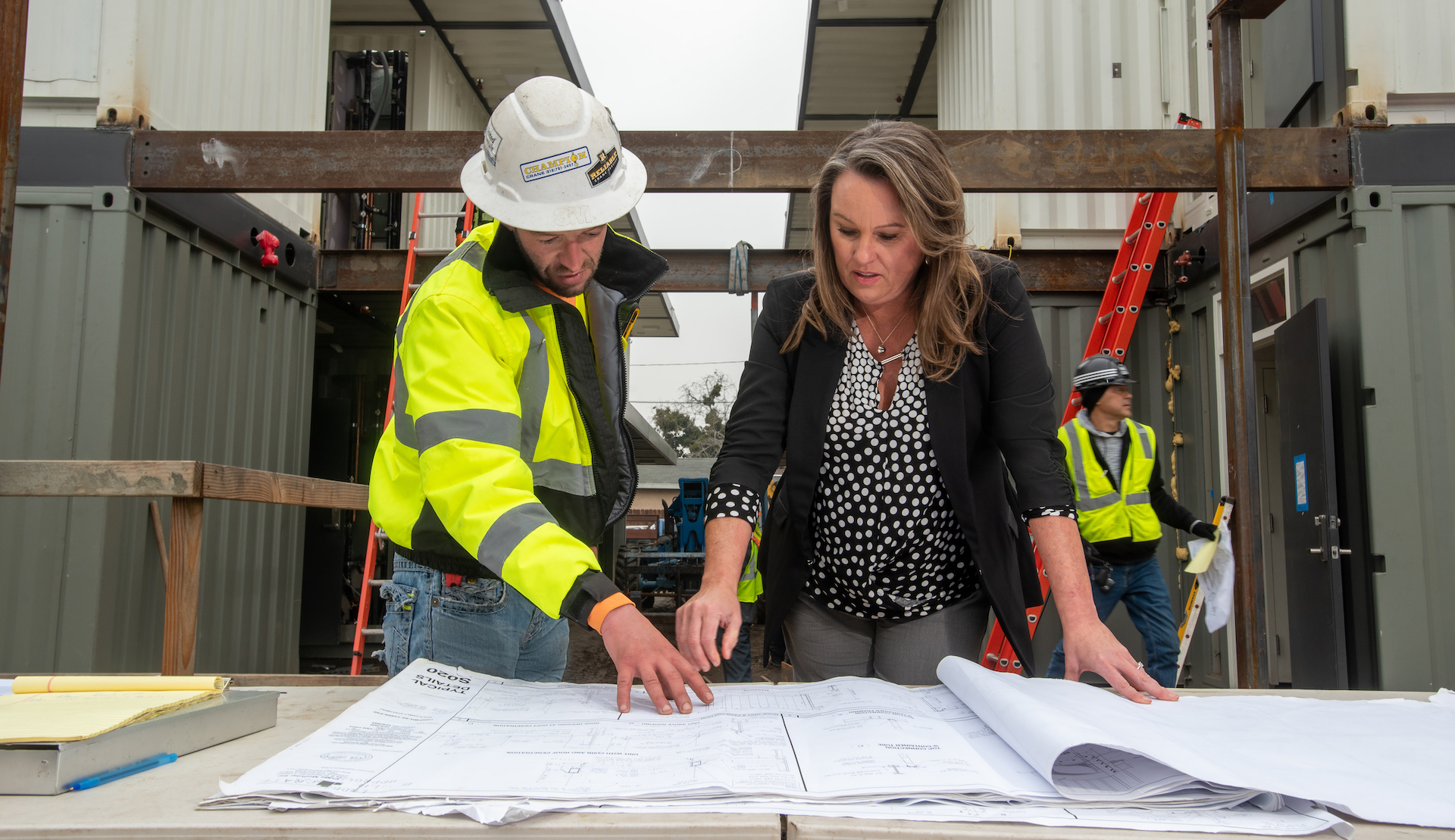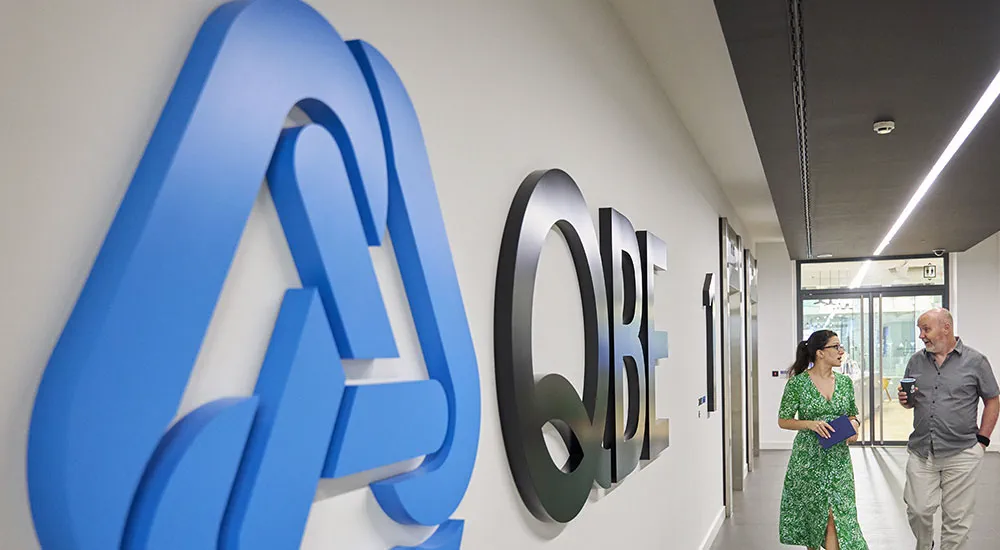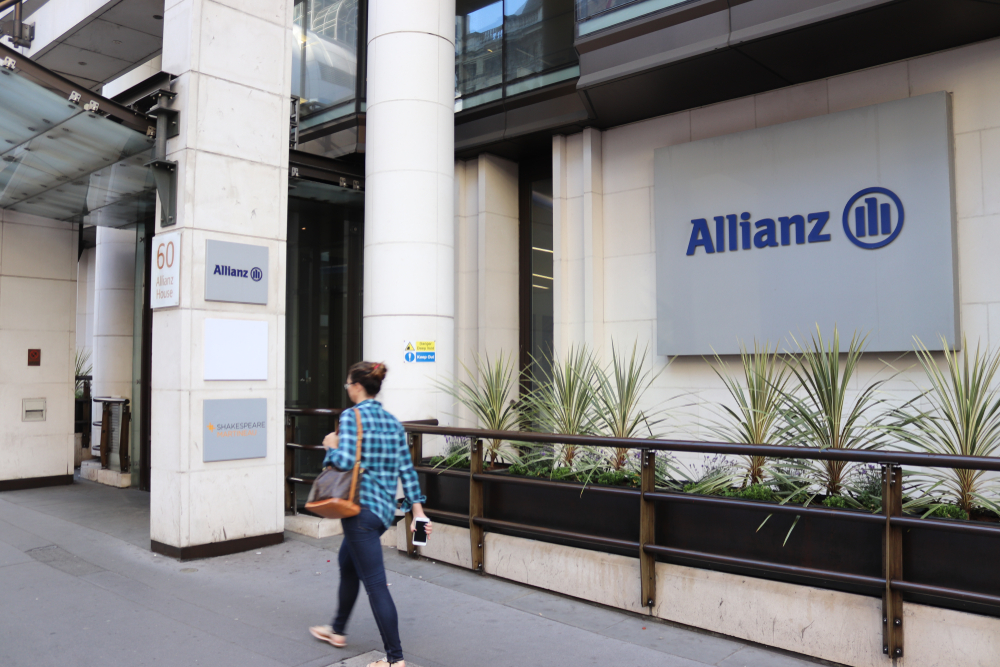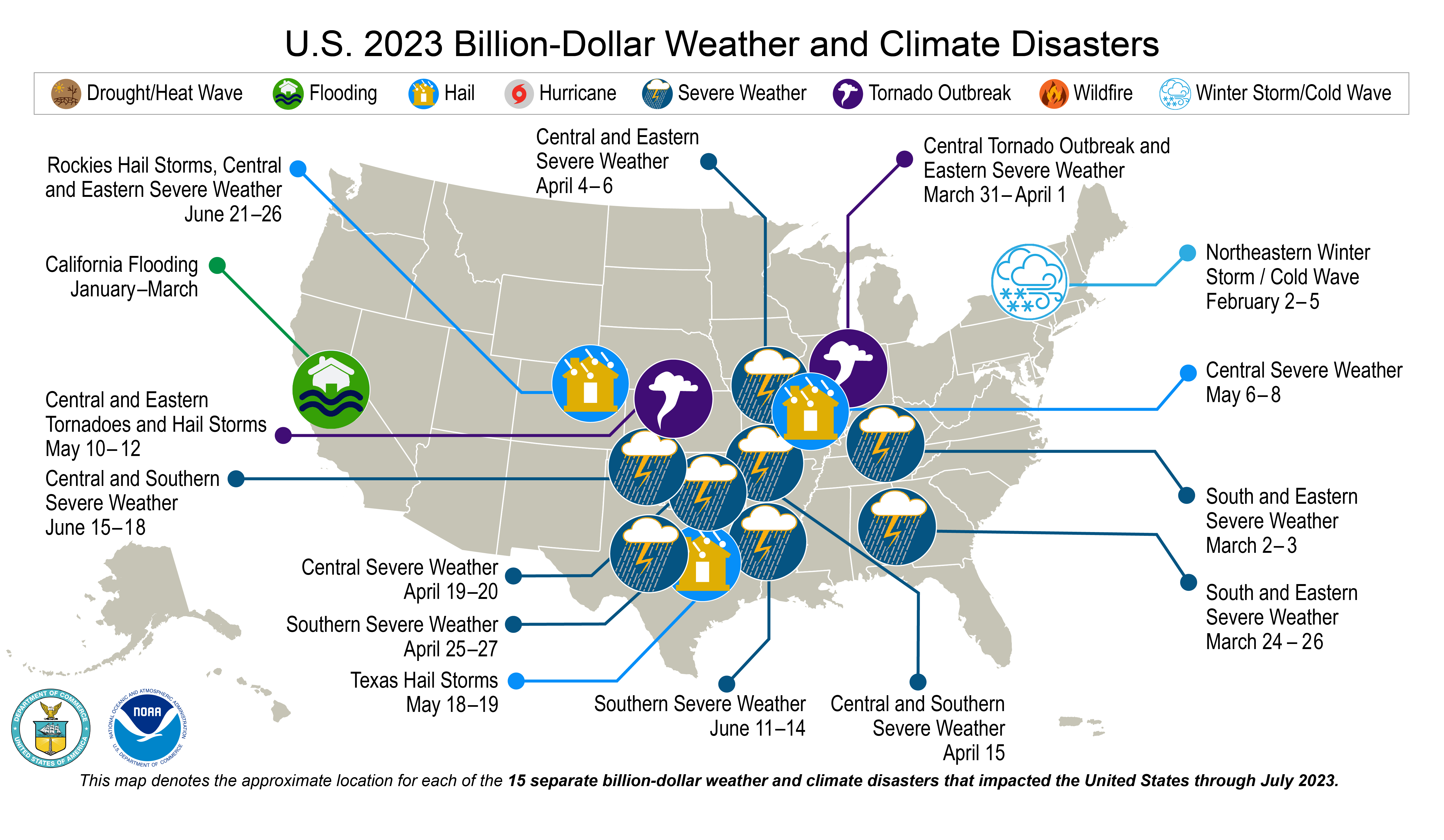Editor’s note: ImpactAlpha contributing editor Imogen Rose-Smith, a longtime senior writer for Institutional Investor, contributes a bi-weekly column on the policies, practices and strategies of the largest asset allocators, including pensions, foundations, and endowments. As Imogen says, she’ll be “tracking what investors do, not just what they say.”
ImpactAlpha, April 26, 2021 – What makes a sustainable investment truly sustainable? And who gets to decide?
When money managers seeking client assets to manage make sustainability, impact, or ESG a core part of their business pitch, it’s always a good idea for not only impact investors, but community members, workers and the environment to look a bit deeper.
Take Trinitas Partners, on Woodside Road in Redwood City in the heart of Silicon Valley. The alternative investment firm specializes in large-scale agriculture investments through Trinitas Farming and Pomona Farming. Both subsidiaries proudly claim to practice and support sustainable farm practices.
One of Pomona Farming’s main projects is Mahi Pono in the Hawaiian island of Maui, a 41,000-acre plot on an old sugar plantation. In Hawaiian, “mahi” means good, “pono” is goodness or resources’. Mahi Pono can be translated to mean “to cultivate the land responsibly.”
Last year, I worked with the Hawaii-based ESG consulting firm Responsible Markets to look more deeply at Mahi Pono’s sustainability credentials. (Together with Responsible Markets, I am a co-founder of the Maui ESG Project, an effort to make Maui a center for impact and sustainable investment.) Responsible Markets’ recently published case study called out the farming operation for its water use, lack of transparency, and negative effects on the community of East Maui.
I’ll detail a bit below how the structures of asset allocation and private equity make many impact claims suspect. More and more managers, of course, are delivering sustainable investment results. But allowing the managers to not only monitor, but to define ESG and responsible business practices, risks discrediting sustainable investing, notwithstanding the obvious client demand for and public benefit of bona fide projects.
For example, BlackRock, the world’s largest asset manager, this month announced it had raised nearly $1.75 billion for two new ESG ETF funds, the $1.25 billion BlackRock US Carbon Transition Readiness fund, and the $475 million BlackRock ex-US Carbon Transition Readiness fund. A look under the hood of both funds raises questions about just what kind of carbon transition we’re getting ready for.
The broader point: BlackRock is in the driver’s seat when it comes to deciding what constitutes an ESG strategy.
BlackRock, like Trinitas, manages assets for pension funds, universities, and endowments and other asset owners, including individual investors of various stripes. An irony of asset management is that the largest pool of capital – the allocators – are not the best resourced. It is the fund managers, especially the very large fund managers, and banks that are willing to pay. Especially if that payout is in the name of asset gathering, or developing products for which the manager can charge a higher fee. Fee-sensitive asset allocators, unlikely to spend much on their own ESG research and diligence, leave it to the managers, even if they ultimately cover the cost.
As Responsible Markets points out, that creates an “agency” problem for asset owners. By outsourcing their investments, allocators rely on managers to keep them informed and to act in their best interests. Managers have a fiduciary duty of care, but what that means when it comes to ESG is still unclear.
Yes, there is reporting. But the managers are in control of the ESG narrative. Leaving it to managers to say what a good ESG investment is leaves a giant opening for doubt. More and more investors are trusting Apollo or BlackStone, BlackRock or State Street, KKR or TPG, not just to uphold ESG standards, but to decide what an ESG investment even is. Should they?
Water rights
In California, Trinitas Farming has sustainability challenges with its major business, growing almonds in the Central Valley. Almond growers have fought a public-relations battle to maintain the popularity of their crop, a major water consumer. Trinitas Farming includes an open letter with “key facts,” to make the case for almonds as a sustainable crop.
Back in Hawaii, the only investor in Mahi Pono is the Public Services Pension Investment Board. The $136 billion pension plan for Canada’s public workers is managed by Montreal based PSP Investments. Like other large Canadian institutional asset owners, PSP is a proponent of ESG and sustainable investment.
And PSP Investments has issued nothing but praise for the project, even giving the team that made the investment an award for their work. “By strengthening and diversifying Maui’s agriculture industry, addressing community priorities, and protecting and enhancing the value of PSP’s investment over the long term, the deal promises to be a win-win for all involved,” the firm wrote in its 2019 report.
Many major asset owners default to such high-level views. Their visibility may be limited by what their managers want them to see (or, indeed, what they want to see). Mahi Pono’s farming plan relies on access to cheap water and the granting of highly preferential water leases. Much of the water it uses comes through the East Maui Irrigation system (EMI), in which Mahi Pono is a co-owner. That system, built over 100 years ago, diverts water away from East Maui to the Central Plains area, where Mahi Pono’s land is.
The diverting of the water is all but destroying the local East Maui community and its way of life. In particular the local indigenous system of taro farming, which relied on stream water flowing from the mountains down to the sea, was diverted. The dried up streams also impacted the local ecology and aquatic life. Recently, local Hawaiians have won a series of court rulings requiring water to be returned to local streams. In Hawaii water is a public trust.
Local residents do reap some benefit from Mahi Pono: the farm has provided rented land to local farmers and provided some crops for domestic consumption.
The Responsible Markets report, however, concluded that what Mahi Pono is doing on Maui is not sustainable and not economically inclusive. It is “hard to escape the accusation that Trinitas is using the rhetoric of sustainability, with a wrapper of indigenous language and values, to engage in greenwashing,” the case study found.
“An ESG strategy which pits local residents against one another is not an effective or compassionate ESG approach,” the report found. “Mahi Pono and PSP cannot cherry pick a select few community groups they like while ignoring and overriding the very real objections of those that do not fit their narrative.”
The founders of Trinitas Partners do not consider what they have been doing in Maui and California to be land-grabbing or speculative. The websites for both Trinitas Farming and Pomona Farming highlight the group’s sustainable approach to farming and land management.
Trinitas and Mahi Pono declined to engage the authors of the Responsible Markets study. PSP directed questions to Mahi Pono. Trinitas partner Ryan Paton has made clear that the water rates are set through a public forum, allowing for community input and comments.
Perhaps investors like Trinitas are merely misunderstood. If so, and if their investments truly are having such positive social and environmental benefits, then they should welcome more scrutiny. It verifies their work. All the more so that others might learn from it.
That is why Responsible Markets is calling for the creation of an independent Community Beneficial Audit. The audit, paid for LP’s, and using independent data, would assess the real-world impacts of any private market investment.
Heart of the matter
Similar audits could clarify what’s what in the spate of sustainable or ESG ETFs and other public-market funds.
It sounds like a bad joke, but financier and Cal grad (go Bears!) Michael Milken has said he founded the high-yield bond market to advance human rights in response to the 1965 Watts riots. It’s true that providing capital and credit is an important tool for economic advancement. But history suggests the mechanisms of Wall Street are designed more for Gordon Gecko than Robin Hood.
The mainstream private market investment management industry rewards fund managers and allocators, but not workers or community members. Indeed, profits for the former group can often come at the cost of the latter.
The Predistribution Initiative’s Delilah Rothenberg, Raphaele Chappe, and Amanda Feldman argue that certain capital structures and investment behaviors do not lend themselves to positive impact outcomes and can often have negative impacts, especially on vulnerable communities and stakeholders.
In their search for yield, investors have increased their leverage, resulting in riskier investments and a more fragile economy, the authors write in “ESG 2.0: Measuring and Managing Investor Risks Beyond the Enterprise-Level.”
“Institutional allocation toward higher risk asset classes is systemically contributing to increased global debt burdens, corporate and fund manager consolidation, and risk across capital structures, resulting in fragility for companies, the real economy, and financial markets,” the paper says. “The resulting risks are therefore shared not only by investors, but also governments, workers, and communities alike.”
The authors also identify the concentration of capital flows as being part of the systemic problem and call out the increasingly large amounts of capital controlled by large, and growing, institutional investors like PSP. Such big players need to put large amounts of money to work at one time, making it hard for them to invest in smaller deals and, often causing them to avoid newer and potentially more innovative, or community friendly, firms.
It is not that all investment capital has to be exploitative. But without true accountability, it can be. And yield-hungry investors, who need to put money to work, lack incentives to ask tough questions, or to come up with new structures that might lead to better outcomes.
It is much easier just to write another check to Apollo. Or BlackRock.
What’s in the fund
BlackRock CEO, and well known ESG fan, Larry Fink told the Financial Times his firm’s new carbon transition readiness ETFs would enable investors to understand which companies are making the low-carbon transition faster than others.
“Winners and losers will emerge in every sector and industry based on each company’s ability to adapt and pivot their strategies and business models,” Fink said. “More and more capital is being allocated to sustainable strategies.”
As a strategy this makes a lot of sense, and BlackRock isn’t the only firm pursuing it. What is odd is what these new ESG ETFs actually hold.
When I looked at the BlackRock US Carbon Transition Readiness Fund (LCUT) and the BlackRock World EX US Carbon Transition Readiness Fund (LCTD), I expected to find what you usually do in these situations. Which is a portfolio that is heavily tilted toward areas such as technology, healthcare and, often, financial services. With an underweighting to energy, industry and materials. I did not.
The ETFs do have a lot of money invested in companies like Apple of Alphabet that, actually, appear to have very little to do with the clean energy transition. And, in some cases, are actively involved in financing, or supporting the fossil fuel industry.
More striking, LCUT and LCTD have very similar weightings to the iShares ETF of the indices that they track, the Russell 1000 and the MSCI ACWI Ex-U.S., respectively. In fact, LCUT is slightly overweight energy and materials, among other sectors, and LCTD is slightly overweight utilities and industrials among others.
Within those sectors, however, are companies that it is hard to see as leaders of the clean energy transition.
LCUT includes seven holdings in Carbon Underground’s list of the 200 top owners of coal and oil and gas reserves, including Chevron, Exxon Mobil, ConocoPhillips and Diamondback Energy, according to the not-for-profit watchdog As You Sow.
Retail investors in LCUT or LCTD may believe they are investing in a green fund, without realizing that their money is going into major oil companies like Exxon, or has significant exposure to coal mining via Glencore.
As You Sow does say LCUT has a ‘low’ carbon footprint. But it gave the fund a fossil-fuel grade of ‘D’ and a deforestation grade of ‘C.’
“Based on our analysis, this ETF ignores Larry Fink’s statement, ‘climate risk is investing risk,’ while doubling down on business as usual,” says As You Sow’s Andrew Behar.
Of course, BlackRock never claimed the ETF was fossil-fuel free, nor that it wouldn’t remain invested in the carbon economy. It never claimed to actually be moving capital into building the renewable economy and a new clean energy infrastructure.
Even regulators and policy makers are struggling to define what ESG investing is, in public or private markets. For now, BlackRock can effectively decide for itself what its major ESG strategy looks like.
Meanwhile, BlackRock is charging twice as much in fees for the carbon-transition readiness funds than it does the standard-issue products like the MSCI ACWI Ex-U.S iShares or the Russell 1000.
The situation for the private markets is taking on more urgency because of the looming $2.3 trillion dollar infrastructure package which the White House is keen for Congress to pass.
However the sausage ends up being made, it is almost certain that there will be opportunities for public-private partnerships, and a focus on ESG. If the bill merely becomes a boon for private equity, while creating little social or environmental benefit (looking at you, Opportunity Zones), it will be a disaster and a massively wasted opportunity.
This is why, for infrastructure and real asset investments, having something like a third-party Community Beneficial Audit makes sense.
Imogen Rose-Smith is a contributing editor at ImpactAlpha. A longtime senior writer for Institutional Investor, she was most recently a fellow in the Office of the Chief Investment Officer of the University of California.











